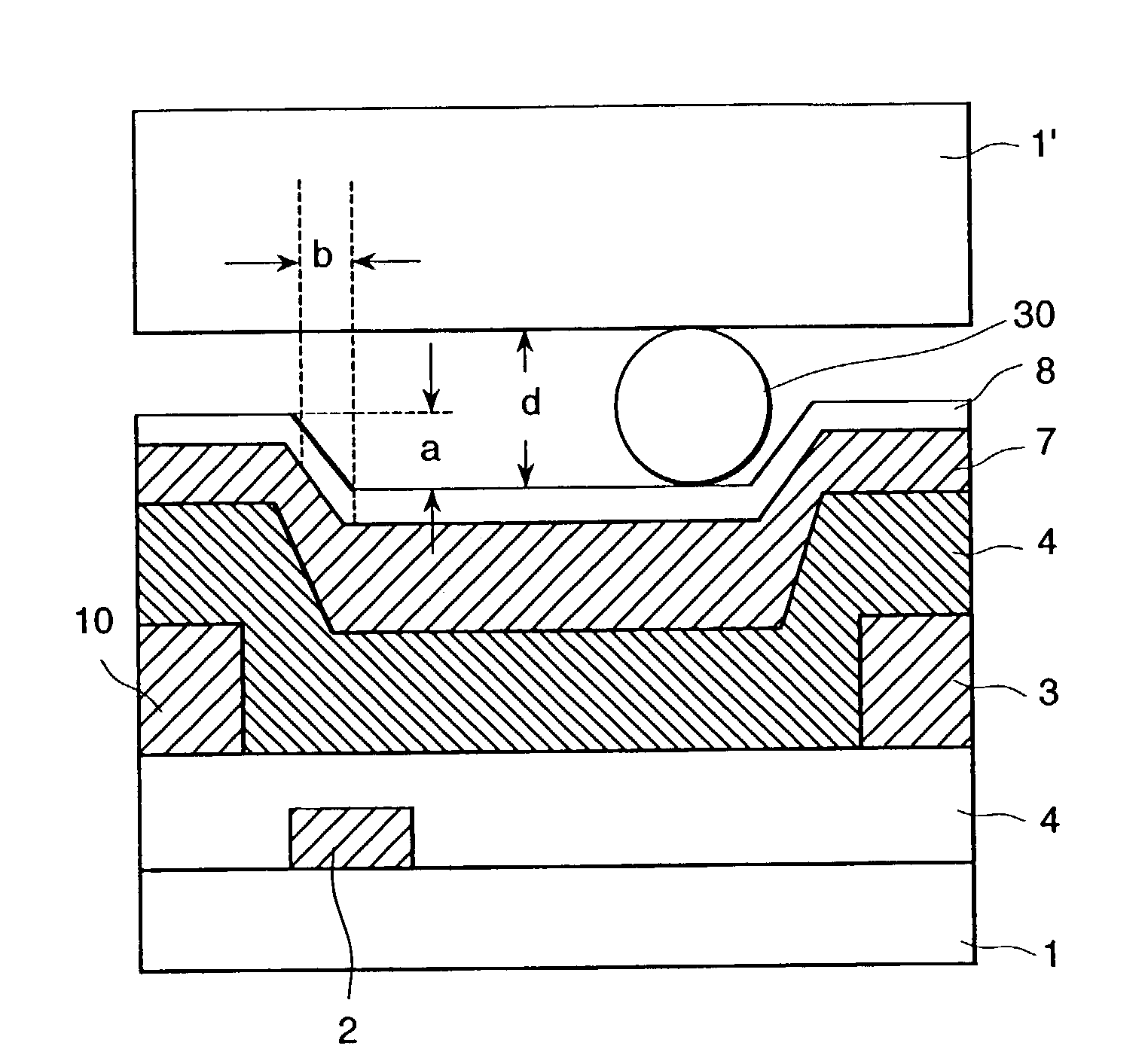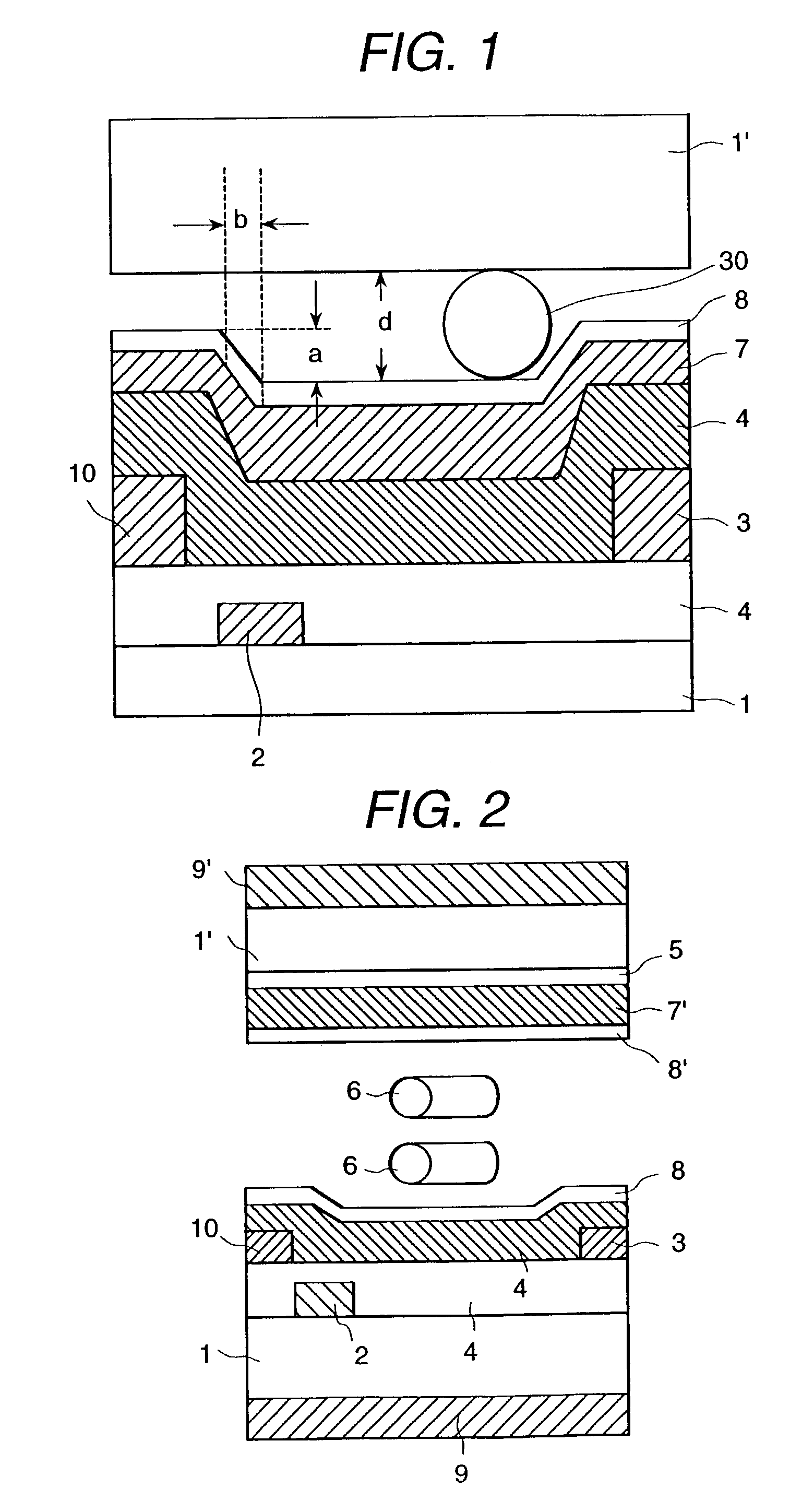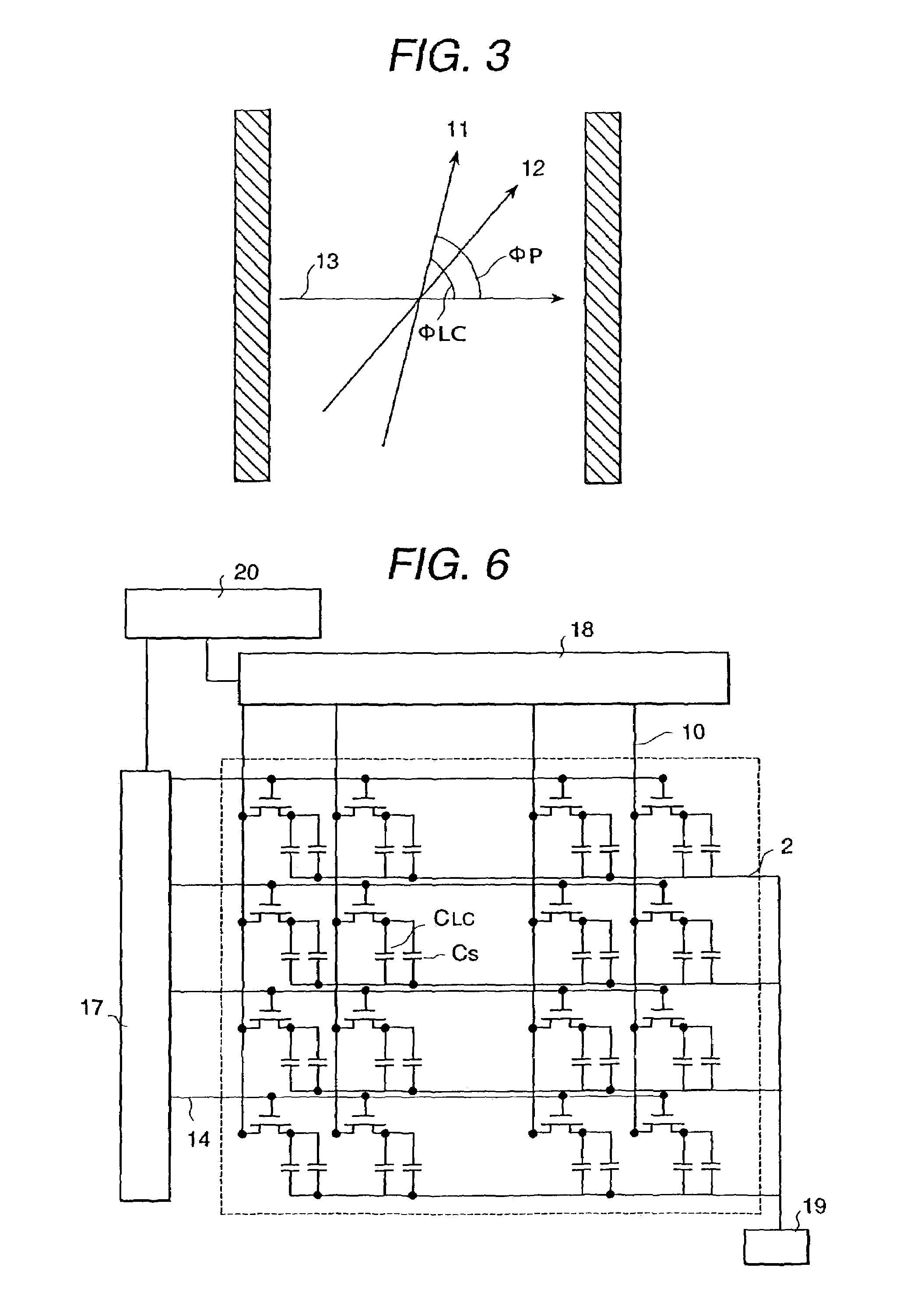Liquid crystal display apparatus
a liquid crystal display and apparatus technology, applied in the field of -, can solve the problems of inability to adequately carry out alignment processing and alignment failure, and achieve the effect of heightened contrast ratio and high picture quality
- Summary
- Abstract
- Description
- Claims
- Application Information
AI Technical Summary
Benefits of technology
Problems solved by technology
Method used
Image
Examples
embodiment 1
[0036]In FIG. 2, a schematic cross-sectional view of a cell of a liquid crystal display apparatus of this embodiment is shown. Between a pair of transparent substrates 1, 1′ there is disposed a liquid crystal layer 32 composed of plural compounds. In FIG. 2 schematically shows rod shaped liquid crystal molecules 6. On both outer sides of the pair of substrates 1, 1′, polarizing plates 9, 9′ are arranged. On the inside face of a cell of one substrate 1, stripe shaped electrodes 2, 3 are formed, and above this an insulation layer 4 is formed. Above the insulation layer 4, an alignment control layer 8 is formed. The electrode 2 is a common electrode to which a constant waveform voltage which does not depend on an image signal is applied, and the electrode 3 is a pixel electrode that carries a signal above waveform changes in response to the image signal. Further, at the same level as the pixel electrode 3, an image signal electrode 10 is formed. Both the thicknesses of the pixel electr...
embodiment 2
[0050]With respect to Embodiment 1, the following points are different in this embodiment.
[0051]On the other substrate which is arranged opposite to the substrate having the electrode group, a stepped difference structure is added. Further, on this opposite substrate, the color filter is formed and at the boundary portion of the three primary colors of red (R), yellow (Y) and blue (B), a black matrix formed of a mixture of resin material and black color paints is formed. The structure is shown in FIG. 8(a). The thickness of the black matrix is greater than all of the primary colors of the color filter portion. On the black matrix and the primary color portion, similar to the electrode side substrate of Embodiment 1, the alignment control layer 8, to which is added the liquid crystal alignment ability provided by the transparent organic high molecular layer 7 and the polarization light radiation, is coated. Further, as explained with reference to the formula (1), since the liquid cry...
embodiment 3
[0053]In Embodiment 2, the thickness of the black matrix is thicker than all of the primary colors of the color filter portion, but in this embodiment, in contrast, the black matrix portion is formed as the most thin portion, as seen in FIG. 9(a). The other points except the above are the same as the Embodiment 2. As to the black matrix material, a low reflection type three layered chromium layer is used. In this case, the stepped difference a at the surface of the alignment control layer 8 is 0.15 at the maximum. Further, the width b at the taper portion is 0.8 and the ratio a / b is 0.19. The thickness d of the liquid crystal layer is 4.2 microns and the ratio a / d is 0.036.
[0054]With the above structure, when an IPS-TFT-LCD having a diagonal angle of 13.3 inches and a pixel number of 1.024×RGB×768 was manufactured for trial, the contrast ratio was found to exceed 300 extending over the whole face of the device, and a liquid crystal display apparatus having a good display homogeneity...
PUM
| Property | Measurement | Unit |
|---|---|---|
| thickness | aaaaa | aaaaa |
| size | aaaaa | aaaaa |
| size | aaaaa | aaaaa |
Abstract
Description
Claims
Application Information
 Login to View More
Login to View More - R&D
- Intellectual Property
- Life Sciences
- Materials
- Tech Scout
- Unparalleled Data Quality
- Higher Quality Content
- 60% Fewer Hallucinations
Browse by: Latest US Patents, China's latest patents, Technical Efficacy Thesaurus, Application Domain, Technology Topic, Popular Technical Reports.
© 2025 PatSnap. All rights reserved.Legal|Privacy policy|Modern Slavery Act Transparency Statement|Sitemap|About US| Contact US: help@patsnap.com



